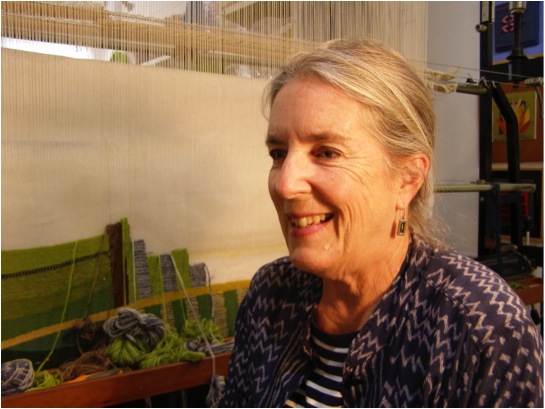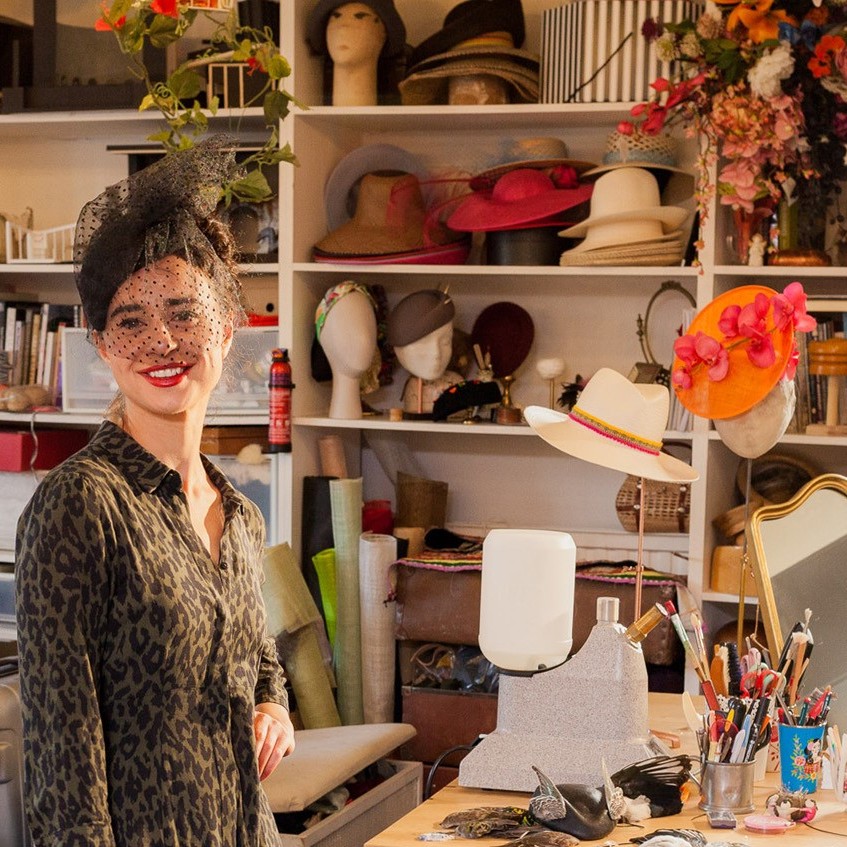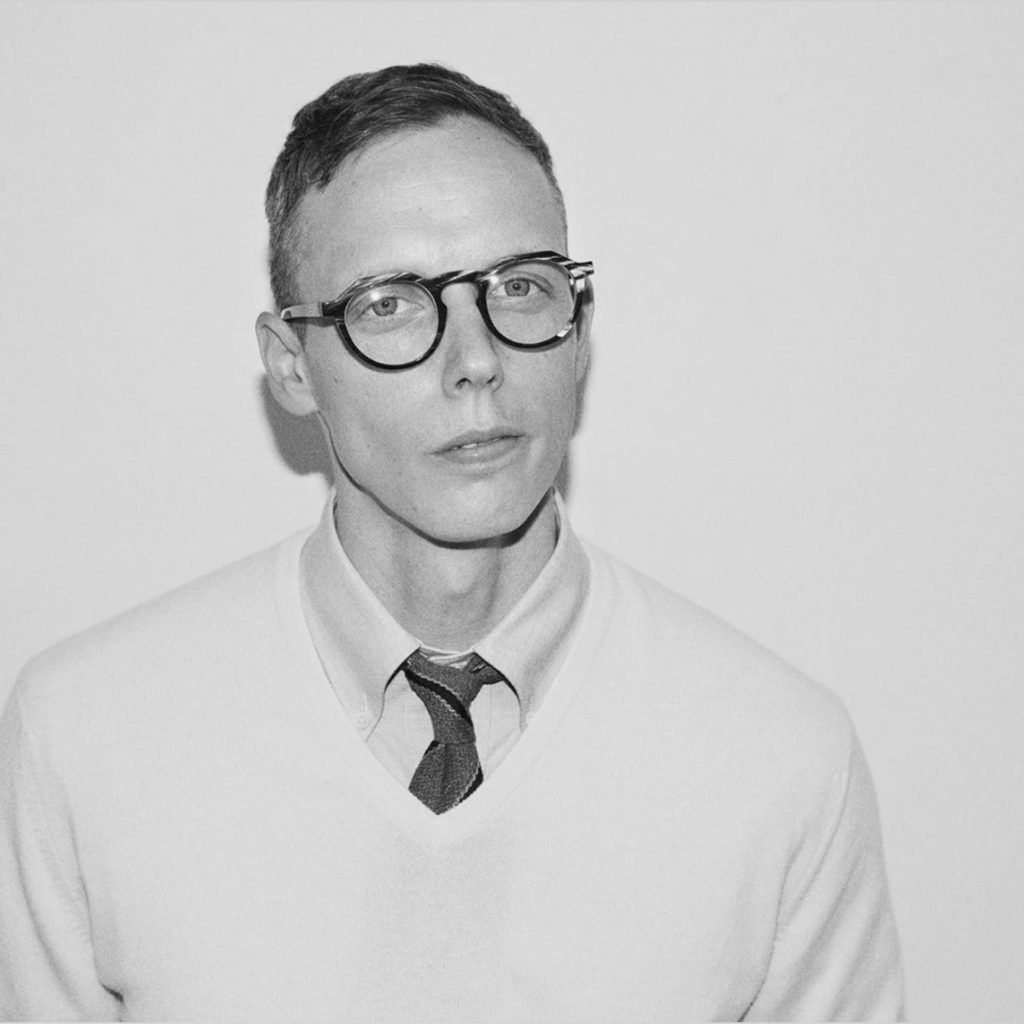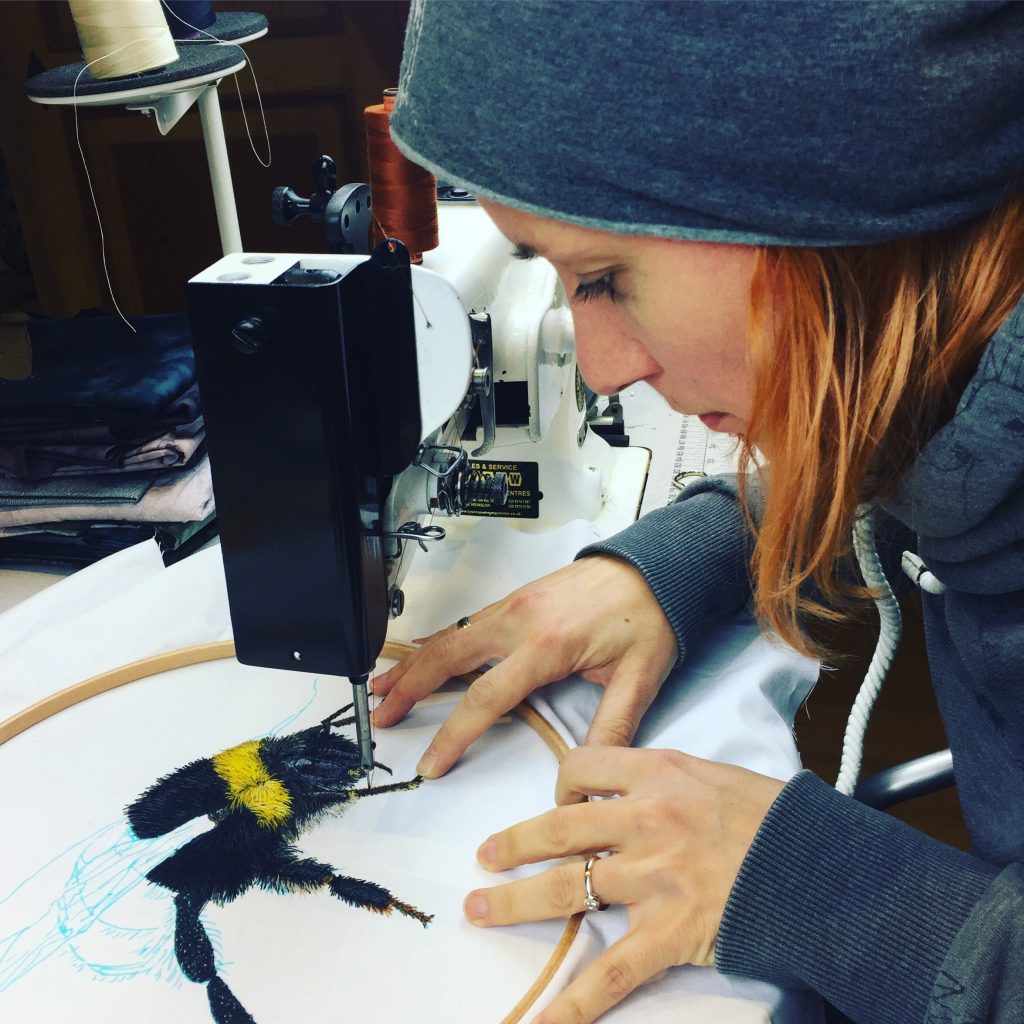Alex Friedman Tapestry Weaver - California, USA
You have a BA, Art History / Fine Art degree. How has this influenced your tapestry? What was your artistic background?
As a child I loved to draw. I spent hours drawing imaginary places and animals but, quite practically, I also made a number of floor plans for houses I would like to live in!
I studied both Art History and Fine Arts as I found each field offered insights into the other. Both sides of my brain were stimulated by the offerings and I learned to look at art from many different cultures over the centuries to understand why they looked the way they did. My final year I had a class that examined architectural history and this rekindled my childhood interest in buildings.
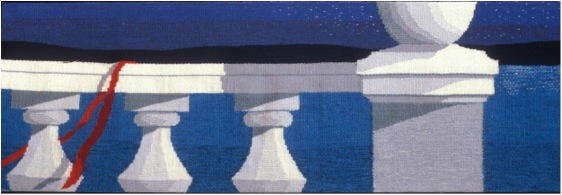
‘Full Moon Fancy’
After my formal education I considered architecture school but decided first to find a job in the field to learn more about it. I was hired as a librarian in a medium sized firm in Cambridge, Massachusetts, to catalogue building codes, blueprints, and archive boxes of building samples from the different projects. (This included door knobs, glass and brick samples, colour chips and a large range of assorted elements that could fit in the box(es), amusing work for a librarian!) I also built scale models and did some interior design. It was a very varied job that I liked after a few years I realised that I wanted less administration more hands-on creative opportunities.
I was encouraged by friends to take an evening weaving class at the YWCA. Three six-week classes of beginning weaving convinced me I had found a new direction. I loved the handwork, the vast array of colours, the planning the possibilities. I was fascinated by the endless patterns, the magic of it all. Still no sign of tapestries on my horizon but that came the following year.
Your initial introduction to tapestry was at Michelle Lester’s Studio, working on a large commission for jumbo jets. Can you discuss this introduction and how it has inspired you?
In 1973 I moved to New York City and joined a local guild to meet weavers and find a weaving job. The fates were smiling because soon after I was hired by Michelle Lester (1942-2002) to weave tapestries for a new fleet of 747s. Michelle, who had a weaving studio in the Garment District of New York City, also had a connection with a gallery that secured this very large airline commission. I had not yet woven a tapestry but I must have seemed very self-assured and willing to learn because I was hired on the spot!
I must backtrack here to say that the only tapestry I had seen to this point was a dreary verdure that belonged to my great aunt. As a child I remember thinking it was an ugly thing to hang on a wall. My slow to arrive tapestry epiphany came when I subsequently realised that tapestries could be colourful, dynamic and they did not have be mural size.
Eventually four weavers were hired to work on this project. Each jet plane was to have 6 tapestries on it; two to cover the movie screens and four to make up the first class cabin bulkhead that included two closet doors in the centre, and the fuselage shaped panels on either side.
The project took over 18 months and was well paid. The tapestries were not complex in design but they did have to be carefully woven to fit the shaped patterns they were to fill. They were repetitive and there were regular deadlines to meet. To keep it interesting, we would each weave six of one of the panels and then switch and weave six of another. By weaving the same ones over we got much faster and could anticipate where problems would arise. For example, one of the screen covers took me about three plus weeks the first time I wove it. In the end I could weave it in 5 days because I was so familiar with it, I realised that much of the time saved was all about the decision making. Doing a repeated project would seem to be boring but in fact each time the weaving developed a personality and, like children, they were a little different each time. Altogether we made an edition of 37 sets for 36 planes. There was an extra set in case one series needed to be cleaned or repaired.
This was my first trial by fire tapestry experience. After this experience I continued to work for her on other smaller commissions. She gave little tutoring in tapestry technique but I enjoyed problem solving and discovered many tricks of the trade. I recognised that I needed more direction and over the early years took workshops from many other noted artists.
Can you explain what the construction aspects are that make a work tapestry?
Unlike painting, to which tapestry is so often compared, the construction of a tapestry requires one to make the art and the structure for the art simultaneously. As a medium it is very simple as there are only two main elements; the warp which is kept under tension and provides the skeleton, and the weft which lies perpendicular to the warp and becomes the body of the tapestry design.
Tapestries are often described as ‘weft faced’ meaning the warp is not visible. Compare with most fabrics, sheets, jeans, oxford shirts, in which there is a balanced weave where both warp and weft are visible. The options for the weft are wide open. Artists have used wool, silk, cotton, as well as feathers, wire, synthetics, grass, newspaper, etc. I use wool, cotton and/or silk mainly because tapestries take a long time to weave and I consider the archival aspects in choosing materials since it is a big investment of my time.
To begin, the warp is threaded on the loom. Once it is checked over for correct threading, tension is added to make it ready for weaving. With a temporary weft I make a foundation that serves to spread the warp from the small knotted bundles into a properly spaced warp.
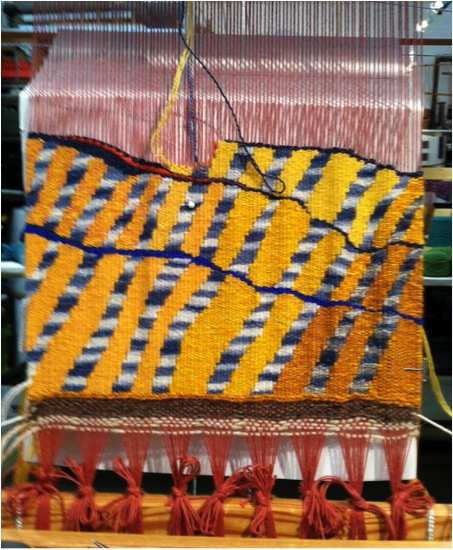
Warp tie up detail from Strata, Strata
Wefts are generally woven in one at a time in a specific area according to the design. I will weave a few inches of a colour area and then start a new colour and weave a section slowly building up the design. In the image here, I began at the lower right with the dark yellow.
The next weft is the one to the left, a striped blue which leans on the yellow, and so forth across the hemline. Unlike machine looms you may have seen, where the weft travels levelly from one selvage to the other, in tapestry, areas of one colour can be built up the warp so the next colour can be woven over it. The design will dictate the order in which colours are laid in because of this.
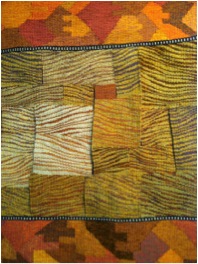
‘Terra: Wheat and Grass’
Another difference is that there are marks you can make in tapestry that are unique to the medium. This includes certain kinds of patterns that would be tedious for a painter but easy for a weaver. Archie Brennan, from whom I have had several workshops, often, spoke about this to his students. It is something that I strongly considered when I started working with more dimension, that is that tapestry should be more about ‘textileness.’
Your work goes beyond 2D. Expand on the possibilities this has lead you to?
Some of the rules of traditional tapestry include keeping your edges straight and your surface flat and controlled. While this is important to learn at the outset, I was restless to experiment.
For me making a tapestry is a construction project. One starts at the foundation building up the shapes layer by layer. Because of this “construction” mode I wanted to create more dimension.
Initially I started with manipulating the tapestry elements. I did a small series called the Flip Series. It was about ten small pieces in which I constructed the elements that I subsequently manipulated.
I considered them studies for large scale pieces but in the end did not pursue because I was concerned that over time the 3D elements would sag and I did not want to add armatures to support them. These were quite successful at this scale and I went on to explore more dimensional work.
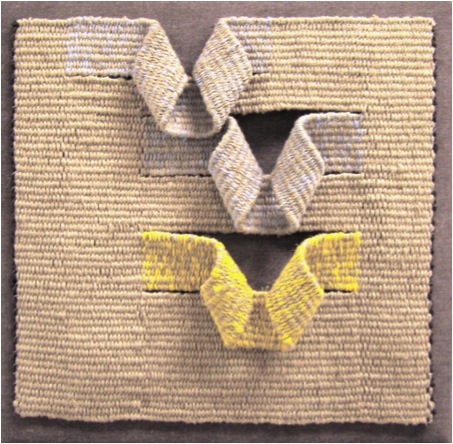
Big soft flips
I began working with an eccentric weft; for non-weavers, it is a weft element that is woven at an angle rather than the traditional weft which is 90 degrees to the warp. I began to have some interesting surprises.
These eccentric wefts were made in bands and went right across the tapestry. It was an interesting design but when I cut it from the loom the whole surface changed character and developed a new possibility.
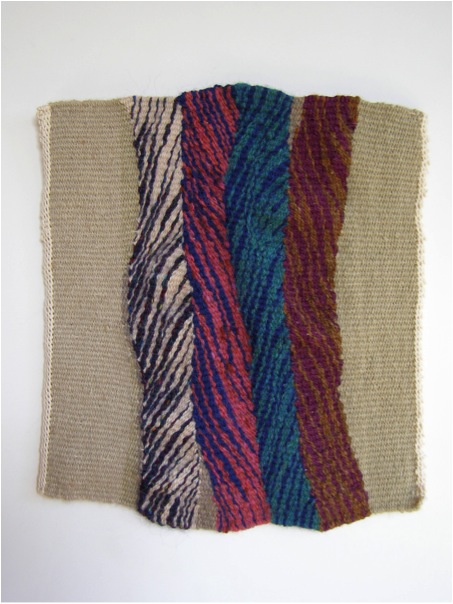
Mini Flow
I have made a series of Flows in both large and small-scale format. I am intrigued how they enhance the image and create a more sculptural aspect in tapestry.
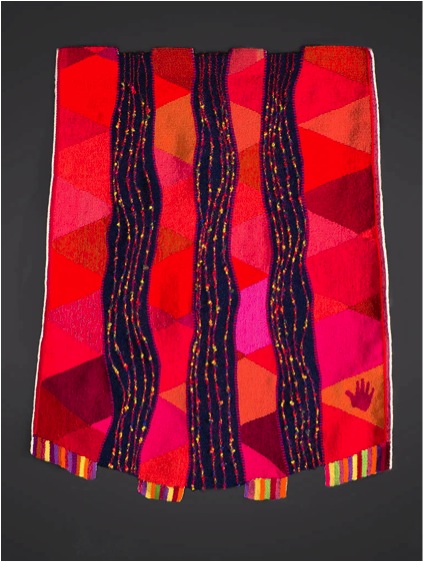
You have made the comment, “I have experimented to see what happens when the boundaries are pushed.” Discuss?
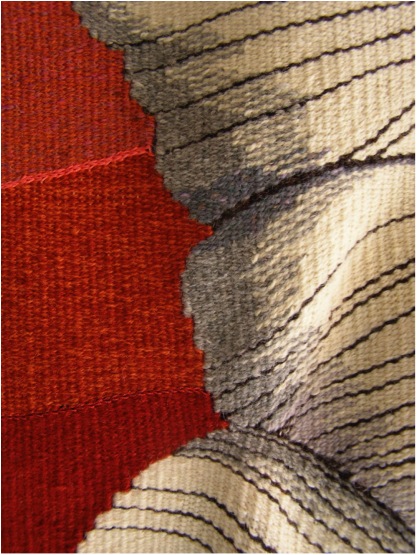
‘Bound’, detail
I have been working with these eccentric areas for almost 10 years and I have learned many of the quirks. There is a degree in the angle of the weft where the weaving looses its textile integrity and the tapestry fails but this is all part of the exploration. When it is successfully used the eccentric areas pop up after it is cut from the loom creating a dynamic surface tension. This is because of the release from the tension on the loom. I have made enough to know what to expect but sometimes I am surprised.
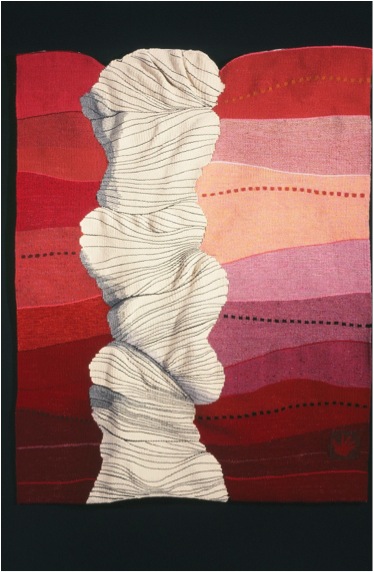
We have long seen tapestries in a 2D format that tell a narrative or explore traditional line, colour, shape, tone, and volume themes. I think that is limits what tapestry can offer.
Discuss the feeling of movement in your ‘Flow Series’?
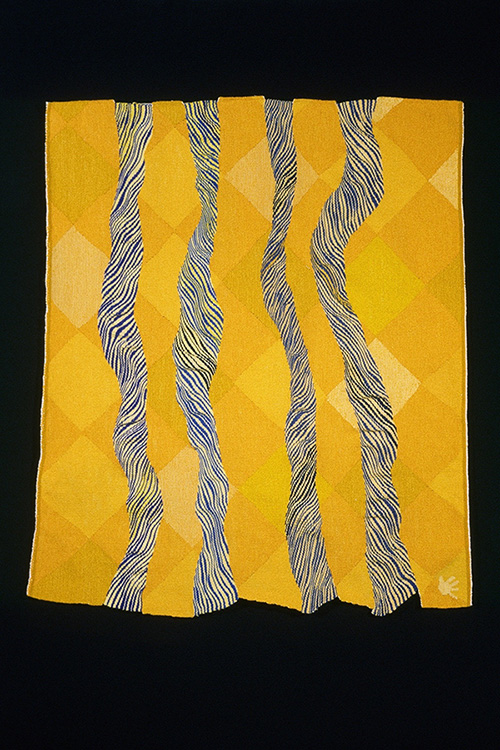
‘Flow 3’
All this movement takes tapestry from being a flat narrative format into a different way of thinking about the medium. Textiles are inherently fluid; they drape, they flex, they respond to their environment and by recognizing that possibility in a tapestry they offer more for the view to consider.
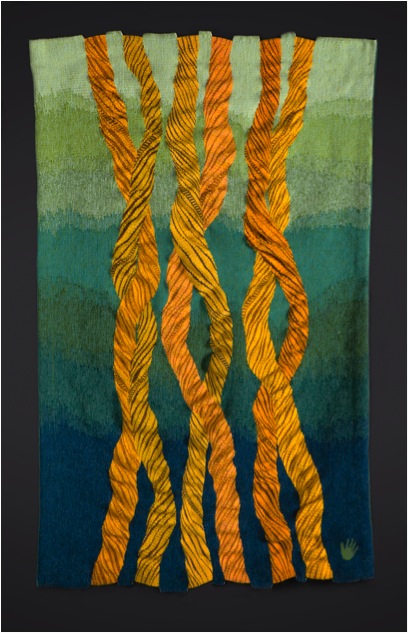
‘Flow 6’
I want to respect the tapestry tradition but at the same time move away from the long narrative role it has played in our western culture. I am happy to celebrate its “textileness.”
Discuss nature and how it inspires your work?
How can one not be inspired by nature? I walk a lot and all my life have been observant of my environment.
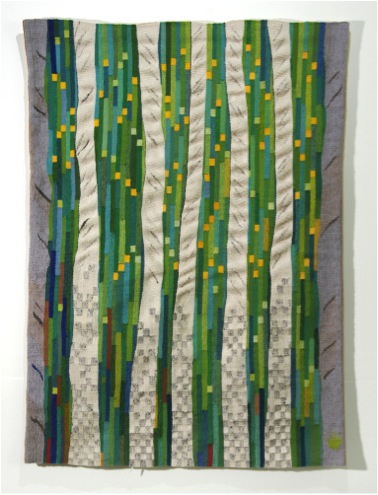
That may come from my mother who was a scientist. She gave me a microscope as a child and we looked at lots of dead bugs, flower pods, and many other organic materials. For those who have looked it is a fascinating world. I find the shapes and colours provide me with a lot of ideas for my art and they become indirect interpretations ideas and need some time to evolve.
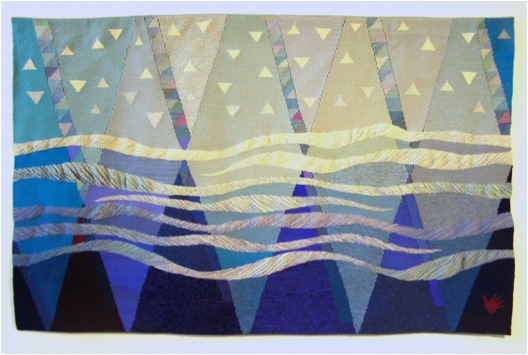
‘Flow Unfathomed’
Along with your contemporary work you do pieces that you refer to as ‘Representational Tapestries’. Can you explain both aspects of your work?
My representational pieces are from an earlier part of my career. 1990- 2005. They generally included a lot of architectural details such as stairs, windows, entry ways. I worked from memory and incorporated shadows which gave the tapestries a tromp l’oeil feel to them.
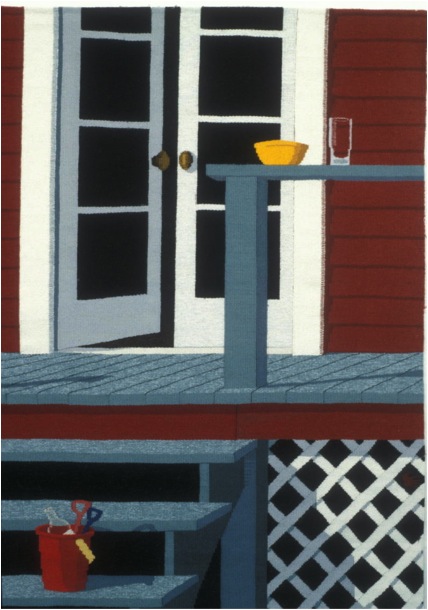
‘Beach Stairs’
Once a man saw a photograph of me sitting in front of my tapestry of a staircase at a beach house. He asked if it was my summer cabin. I replied, “Yes, but it is only a centimetre thick!”
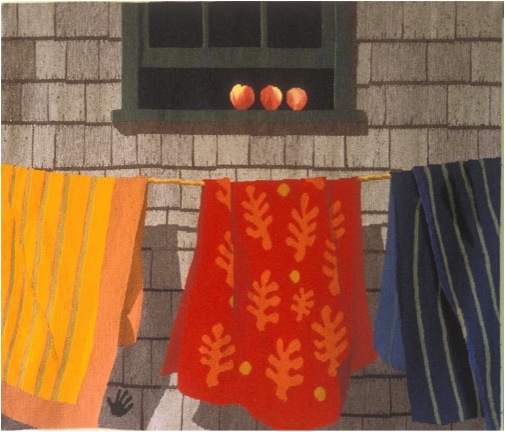
‘Three Graces’
What yarn do your work with and why?
I am currently working with three strands of Paterna, a fine plied wool in most of my tapestries. With three strands I can blend a new colour and make subtle colour transitions. I was very lucky that another tapestry weaver was closing her studio and selling off her huge collection of yarn.
I usually can make the colour effect I want from the yarns I have on hand but from time to time I need to dye a colour. I love this process because it is so magical and honestly, quite addictive.
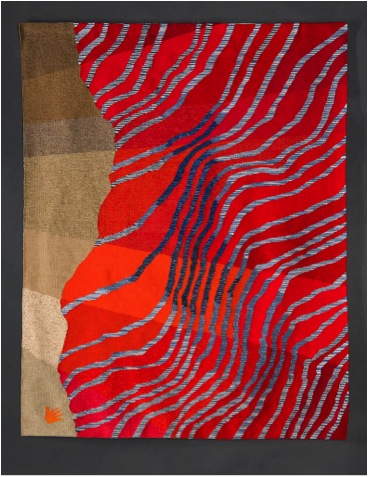
‘Here Today’
Discuss the dyeing of your yarn and also the availability of commercial yarns?
I really enjoy dying yarn but do it infrequently because Paterna has a very wide range of colour. Yet there is always a colour in my mind’s eye that I need and I am usually able to dye it. For my last projects I have space dyed some of the yarn to get a special effect in my work.
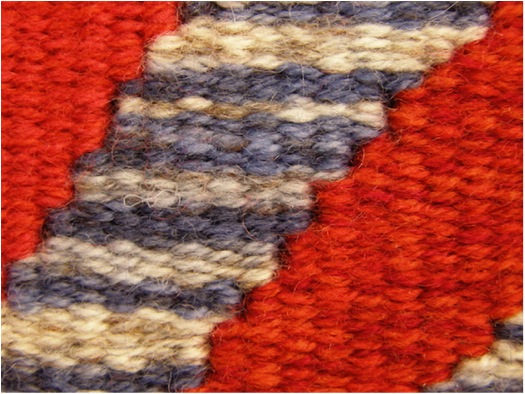
Space dye detail
How do you hang your work?
After I hem my tapestries top and bottom, I line them so that the backs are neat and clean. I attach the loop side of a Velcro strip across the top and I make a lathe strip with the matching hook side Velcro. The lathe is attached to the wall and the tapestry is then attached to the lathe. Because they are flexible, tapestries can also be hung on curved walls and I use a similar method in that case. In some cases with pieces that have shaped tops, I will add a flexible plastic section to maintain the erectness.
Size, what restrictions do you have to the size of your work?
I work in both large and small formats. I have an 8 foot (2.5m) Shannock loom which gives me lots of possibilities for size. I also have a six foot Regina Glimakra rug loom that I use for smaller projects. And I have used smaller, travel size copper looms for mini projects. Overall, I most enjoy being absorbed in a large format tapestry on the Shannock loom.
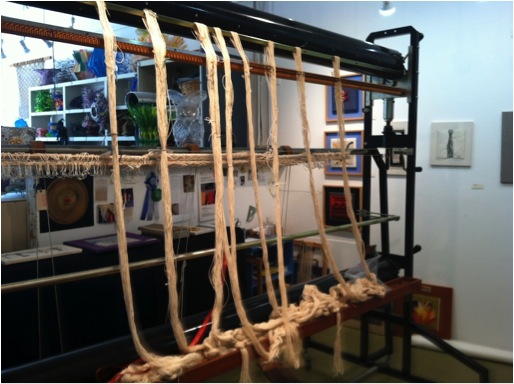
Shannock Loom
Can you show and tell us about your studio?
I share a large studio in an industrial building just north of San Francisco. There are over 50 studios which means an environment of many creative people. There are two Open Studios a year and this is an opportunity to teach visitors about tapestry.
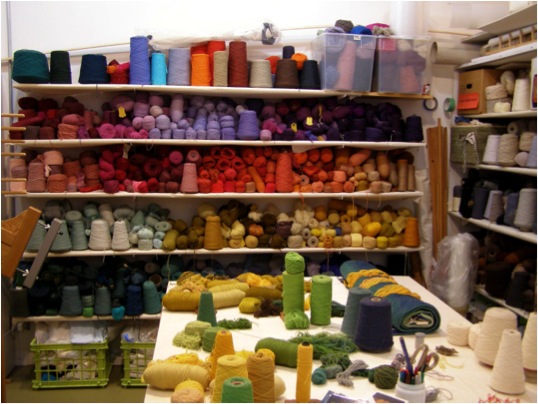
Wooll Wall
You teach, where and when do you fit this into your timetable?
I teach irregularly both in my studio space and outside venues mostly when I am invited. I enjoy it and think I should do it more often but I find it hard to pull away from my projects. Teaching is always a great way to really think about your own art. It helps to me to distil all the thoughts that are brewing in my mind.
Can you discuss one piece that you have done that has been sold and how this sale then effected you both as an artist and in your artistic career?
When my youngest child started kindergarten I decided to rent some studio space for a three year stint to see if I could make a go of it. I was designing colourful abstract tapestries which received some success. I was feeling impatient with the random expression of my abstractions and decided to challenge myself to make a realistic interpretation of a porch scene. Again going back to my architectural interest I looked at a lot of sketches and photos and came up with a design.
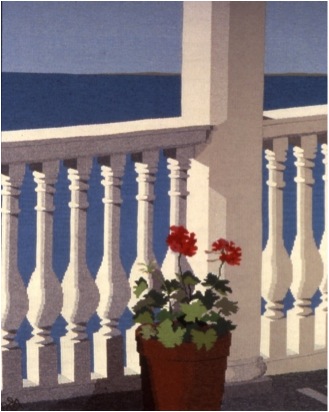
‘Summer Shadows’
Three weeks after I completed this piece it sold. I decided to make more of these realistic pieces and this attracted many clients for whom I did private commissions.
Champlain Valley was a commission for a house in Vermont. The client asked for many things to be included in the tapestry. Like many commissions there is a lot of back and forth until there is an agreement. It worked out well and we were both pleased with the end result. It was very satisfying to do something I love and make people happy at the same time. A treat.
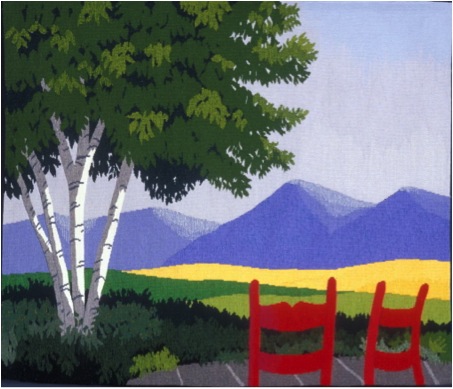
‘Champlain Valley’
As well as your own tapestry work, you are involved in ATA – American Tapestry Alliance. Can you explain the importance of ATA to tapestry and your own work?
I was very involved with the ATA for many years. When my children left for college I had some more time and was asked to be a co-director of ATA in 2000. Earlier the alliance had begun to lose its way and a few members had taken it on themselves to put together a whole new organizational plan that refocused the needs of the membership and how ATA could be more supportive.
Without realising the scope of what I was volunteering for, I signed up as a Director. I was living in London at the time and most of the volunteers were in the US so there was an avalanche of emails. We needed new chairs for the different jobs including a new co director and the organization had to adapt to digital format.
It was hard work and very left brained but I was constantly impressed how much time and energy the volunteers gave especially since we hardly knew each other. It was very exciting to see the changes appear and to see ATA start growing from the 200 members at the time. I wanted to see more international members and that too has significant growth.
I was active on the board until 2008. I have not been so active in recent years but do volunteer on smaller projects when I can. I am more active with a smaller local group, the Tapestry Weavers West that puts on regular exhibits and supports tapestry education.
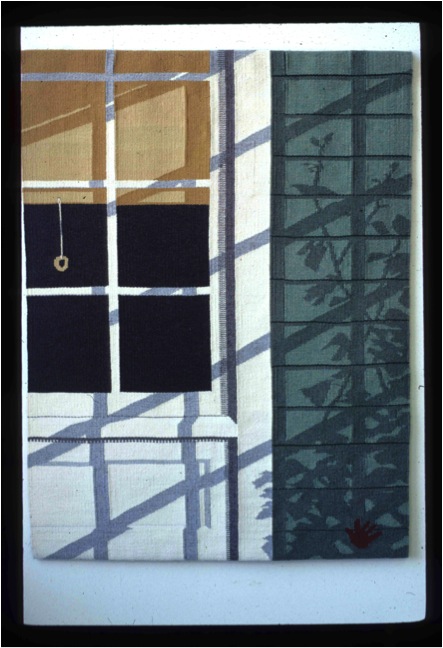
‘Trellis’
Discuss your comment ‘…tapestry has the power to bring peace and harmony into any space.’?
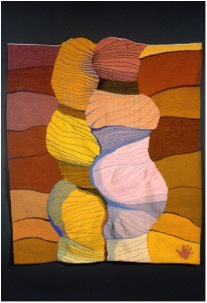
From my studio experience I like to watch people enter and start looking at my tapestries on the wall. There is a sort of calm that comes over them. I am not sure how to explain this but I do think people have an inherent love of textiles, they never go a day without contact to some form of cloth. The softness and the colour may seem comfortable and welcoming to them than the hard edged world we are surrounded by.
Contact details.
Alex Friedman Tapestries
www.alexfriedmantapestry.com
Alex Friedman, California, USA
Interview by Deborah Blakeley, August, 2014
Think a colleague or friend could benefit from this interview?
Knowledge is one of the biggest assets in any business. So why not forward this on to your friends and colleagues so they too can start taking advantage of the insightful information the artist has given?
Other artists you may be interested in:


